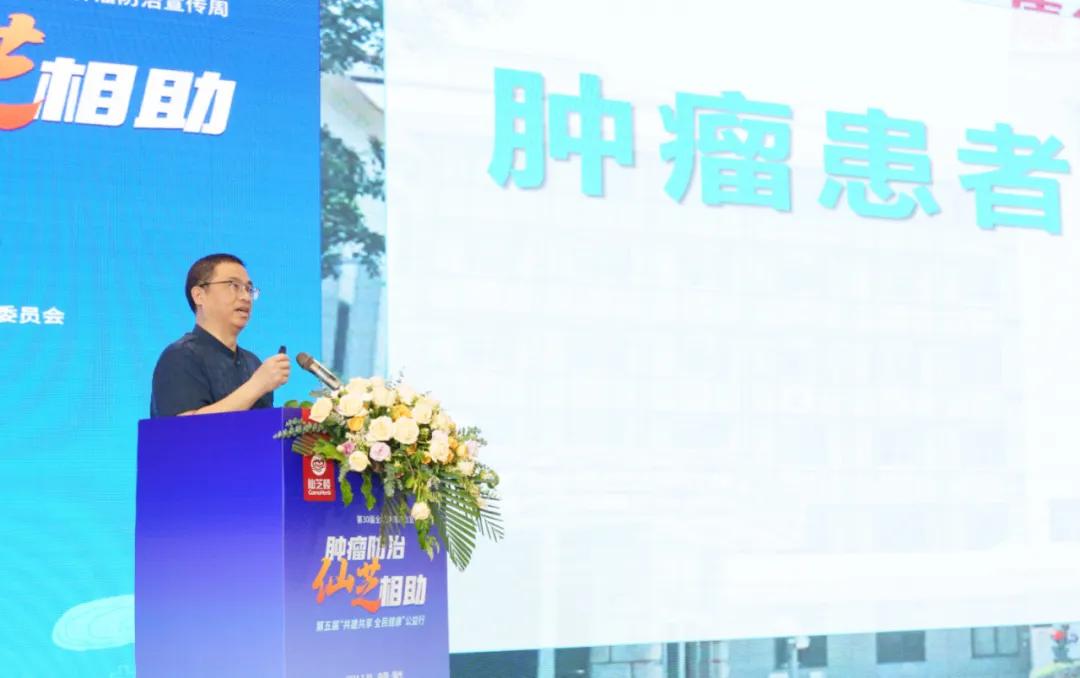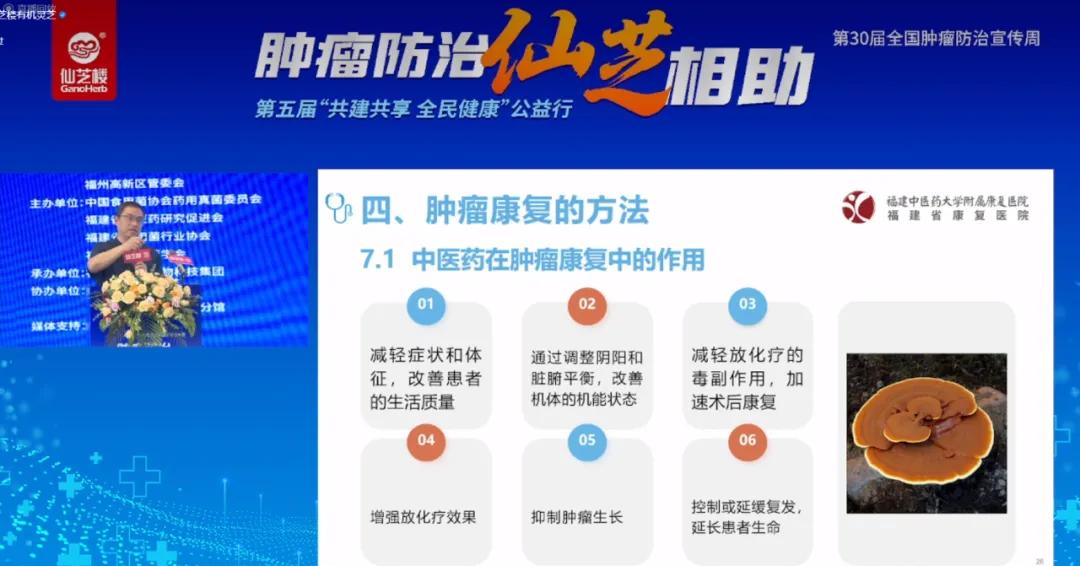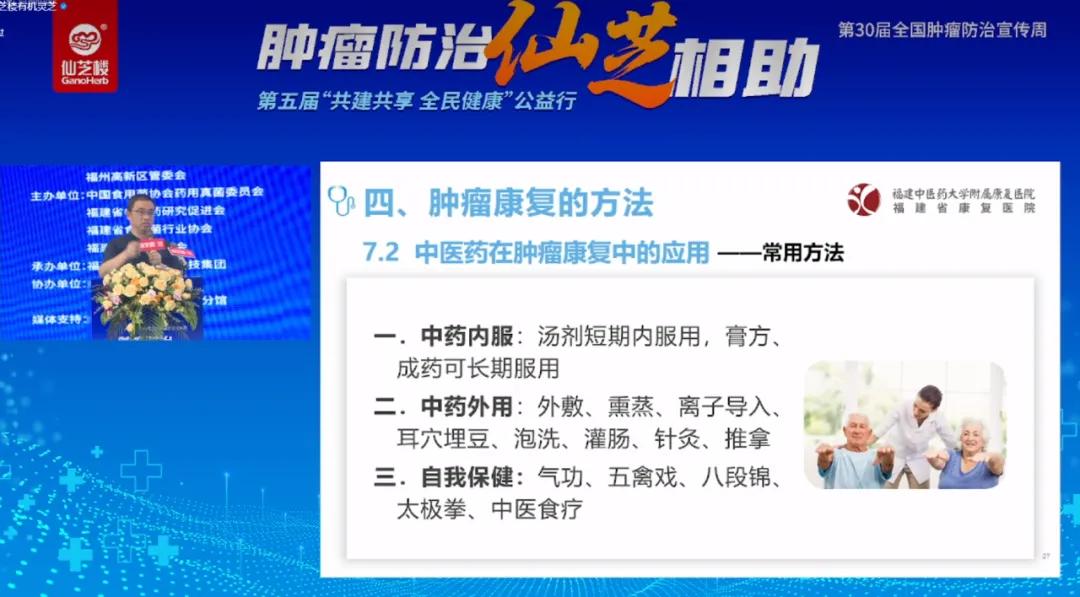Cancer treatment is a lengthy process, generally including surgery, chemotherapy, radiation therapy, targeted therapy, and so forth. However, after cancer treatment ends, patients enter into a phase of long-term battle with cancer. This phase, known as the recovery period, requires even more time and effort from patients to combat cancer compared to the treatment phase, directly impacting their quality of life and life expectancy
On March 30th, at the site of the 5th “Building Together, Sharing Health for All” public welfare activity, Dr. Yang Shangwang, Chief Physician of the Affiliated Rehabilitation Hospital and Director of the Oncology Rehabilitation Department of Fujian University of Traditional Chinese Medicine, provided us with a detailed introduction to the “Rehabilitation Treatment for Cancer Patients.” What exactly does cancer rehabilitation entail? What are its effects? Let’s take a look together.
What is cancer rehabilitation? Cancer rehabilitation refers to assisting patients in maximizing the improvement of physical and psychological functional impairments, impaired social attributes, and declining occupational abilities caused by tumors and their treatments. Throughout the treatment process and post-treatment, cancer patients may experience fatigue, pain, lung infections, edema, psychological issues, nutritional deficiencies, sleep disturbances, and more, all of which require rehabilitation intervention. Unlike cancer treatment, cancer rehabilitation emphasizes greater involvement of families and communities. Through exercise, psychological support, and social engagement, the aim is to help patients achieve functional restoration, alleviate suffering, improve quality of life, and facilitate early return to society.
During the rehabilitation period, what can cancer patients do? There are mainly three types of cancer rehabilitation methods.
01. Physical Therapy
Physical therapy involves the application of various natural and artificial physical factors, including sound, light, electricity, magnetism, heat, and therapeutic exercises. These interventions are used to prevent recurrence, treat existing conditions, and rehabilitate the body. It primarily includes physiotherapy and exercise:
Among them, exercise therapy is the core part of physical therapy. Common functional impairments in cancer patients, such as lymphedema, pain, reduced joint mobility, decreased muscle strength, and muscle endurance, can be treated through exercise therapy methods such as joint mobilization techniques, muscle strength and muscle endurance training, and cardiopulmonary function training.
Characteristics of physical therapy applied to cancer patients: moderate exercise intensity; selected methods do not promote tumor growth; simultaneous improvement, compensation, and substitution paths are considered; preoperative and postoperative considerations are taken into account.
02. Occupational Therapy
Occupational therapy involves the application of various occupational activities related to daily life, work, and leisure activities to guide individuals with disabilities to recover function and engage in meaningful activities, such as work, socialization, and leisure, to promote survival and improve their quality of life.
03. Speech Therapy
Speech therapy is a component of rehabilitation medicine that evaluates, treats, and studies various speech-language disorders.
There are mainly two types of language disorders caused by tumors:
Aphasia: Further improvement of functional communication is achieved through language training and compensatory strategies.
Articulation disorders: Training is conducted on producing speech-related elements, mainly focusing on sound production, breathing, resonance, and articulation, to improve the patient’s communication skills.
04. Dysphagia Treatment
For patients with head and neck cancer, radiation therapy (alone or combined with surgery) is more likely to cause dysphagia than surgical treatment.
05. Psychological Rehabilitation Therapy
This includes general psychological treatments such as explanation, encouragement, reassurance, and assurance, as well as cognitive treatments such as acknowledging cancer as preventable and treatable, emphasizing early detection, promoting optimistic treatment prospects, advocating cancer self-healing, and recognizing the role model effect of cancer-fighting celebrities.
Additionally, there are methods such as behavioral therapy, relaxation therapy, biofeedback therapy, relaxation combined with inner imagery therapy, qigong therapy, and music therapy to achieve psychological rehabilitation purposes.
06. Nutritional Support and Lifestyle Guidance
Proper nutrition should encompass a variety of nutrients and a balanced dietary regimen that not only stimulates appetite but also facilitates optimal digestion.
07. The Role of Traditional Chinese Medicine in Cancer Rehabilitation
Traditional Chinese Medicine (TCM) plays a significant role in cancer rehabilitation, including alleviating symptoms and signs, improving patients’ quality of life, reducing the toxic side effects of radiotherapy and chemotherapy, accelerating postoperative recovery, inhibiting tumor growth, and prolonging patients’ lives.
Dr. Yang mentioned, “Reishi mushroom is an excellent traditional Chinese medicinal material. It has a mild nature, with no contraindications, and can be used by the majority of people, making it widely accessible.” Moreover, Reishi mushroom has now been classified as a dual-use substance for medicinal and dietary purposes. In daily life, Reishi mushroom, Codonopsis pilosula, Astragalus membranaceus, and other Chinese medicinal herbs are recommended for brewing with boiling water and making soups.
08. Self-Rehabilitation
Dietary adjustments upon syndrome differentiation, appropriate exercise, and maintaining consistent medication are essential for long-term comprehensive treatment. This approach is crucial for preventing relapse and enhancing quality of life.
Lastly, scar treatment, edema reduction, pain relief, upper limb functional training, and other cancer rehabilitation methods, when combined with various therapies, can significantly improve patients’ lives, enhance their quality of life, promote cancer rehabilitation, prolong life expectancy, and aid patients in returning to society as soon as possible.
Post time: Apr-02-2024



